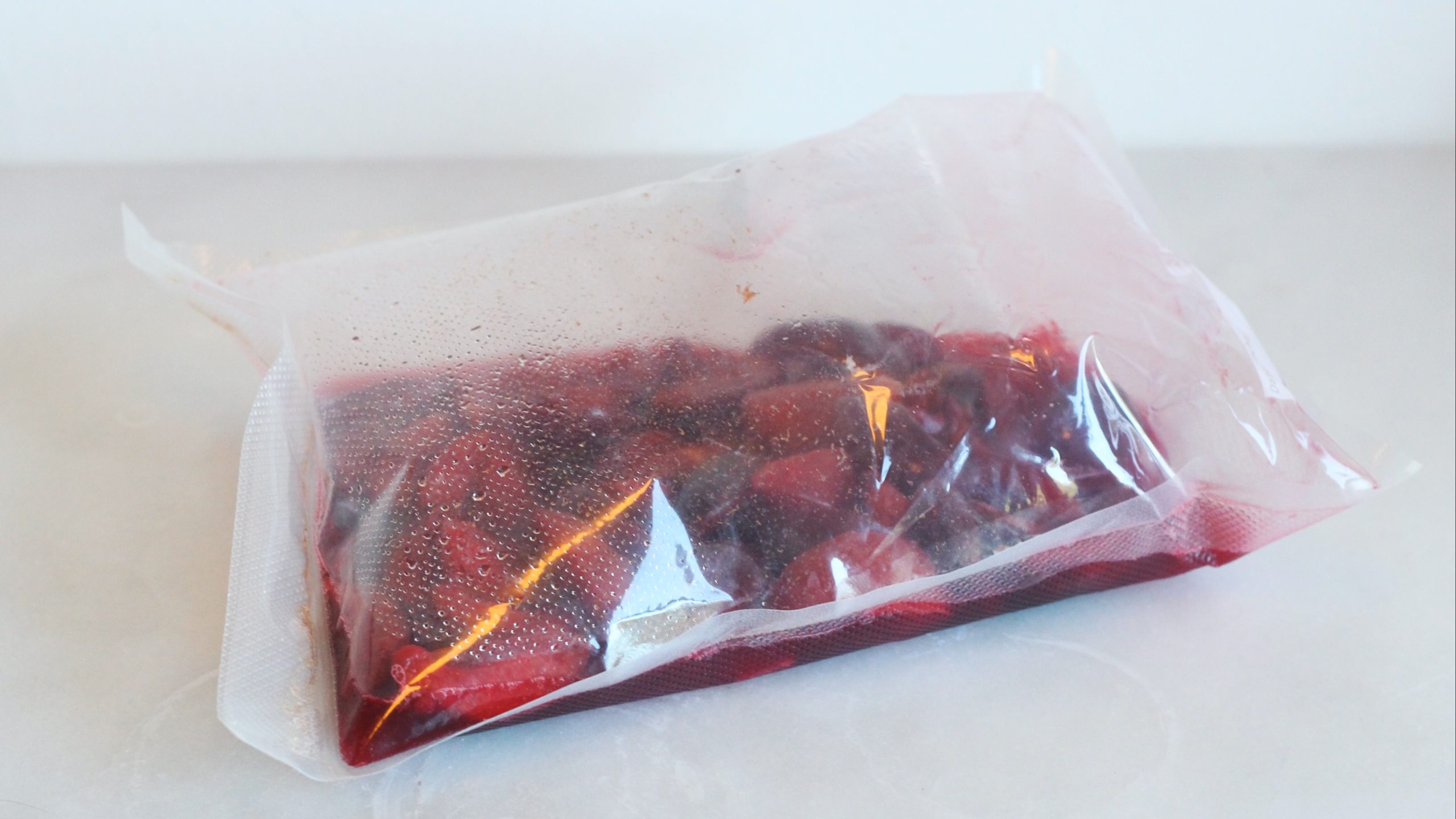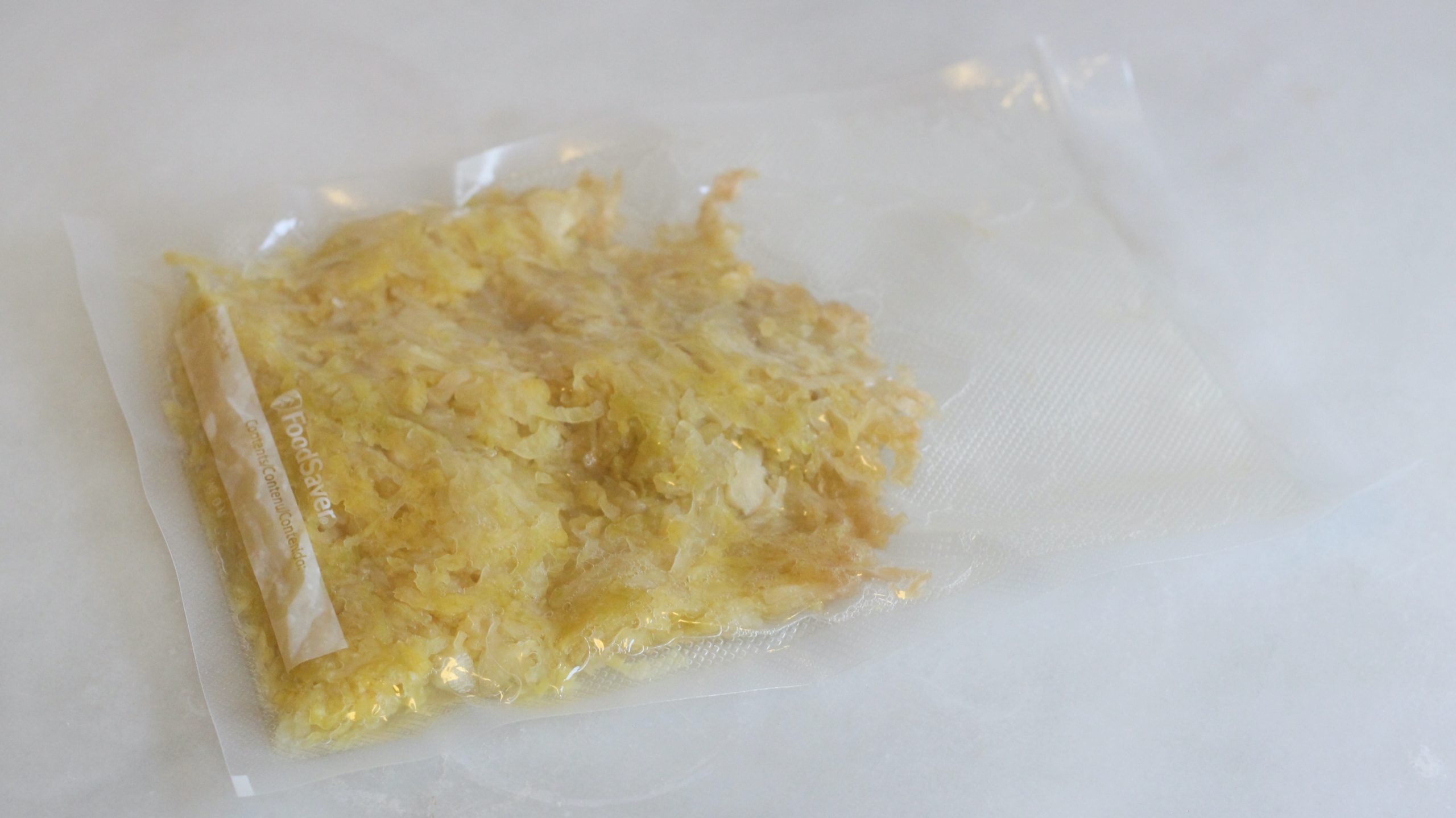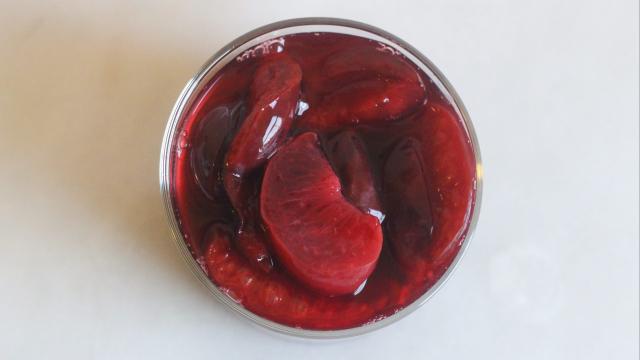A good pickle is a very pleasing thing, but branching out from fridge pickles can seem a little intimidating if you’ve never fermented anything before. But lacto-fermentation — which requires nothing but salt and an oxygen-free environment — is far more accessible than it sounds, especially if you have a vacuum sealer.
We’ve discussed lacto-fermentation before, back when we used the process to make surprisingly delightful (and fizzy) pickled grapes. As I mentioned back then, the salt is key. It acts as a sort of pickle body guard, killing off harmful bacteria and allowing Lactobacillus (the good bacteria) to pickle your produce:
Though “lacto-fermentation” sounds kinda science-y (and potentially dairy heavy), it’s a pretty straightforward (and milk-free) process. The “lacto” refers to the bacteria Lactobacillus, a naturally occurring bacteria that converts sugars to lactic acid when placed in an anaerobic (oxygen free) environment. The lactic acid gives the pickle a nice tang, and salt inhibits unwanted bacterial growth while letting our good bacteria do its thing.
It worked great with grapes, but lactose-fermentation can be used to pickle almost any damn thing. The process can take anywhere from a few days to a few weeks, depending on how moist and sugary your plant part is. (The sweeter it is, the faster it will ferment.)
I was recently given a bag of plums by a friend with a plum tree, and he strongly recommended pickling them this way. This recommendation ended up being absolutely and completely correct. The plums were good fresh, but they made an outstanding pickle. They were the perfect combination of sour, salty, and sweet; I’ve eaten them on salads, chopped up into rice dishes, and with cheese and crackers, and each experience was very pleasing. I’ve also lacto’d pears (which are great in salads) and cabbage (which is just sauerkraut). Both were rendered salty, funky, and tangy, and both required very little work on my part.
Lacto-fermentation is not really meant to preserve, but it can make mediocre fruit and vegetables more delicious and transform a lacklustre, mushy piece of produce into something you actually want to eat. Lacto-fermented pickles will often last at least a couple of months — and their flavours will change and intensify as time goes on — but they’re not shelf-stable like canned goods. Just make sure to eat lacto-pickles within a few months, store them in the fridge, and toss them if they start to grow weird mould or taste off.
To make lacto-pickles, you will need:
- Fruit or vegetable (I like plums, grapes, and pears for the former; onions and cabbage for the latter, but feel free to experiment.)
- Salt (Iodine can apparently inhibit fermentation, but I’ve used table salt with no problem.)
- A vacuum bag and sealer (You can use jars and crocks, but we’re focusing on this method, which is the easiest.)
Weigh the amount of fruit or vegetable you want to ferment and note the weight. Slice, chop, or shred your produce into the shape and size you desire, and place it into a vacuum bag. Depending on the amount of sugar in your plant part, the bag may swell as everything ferments, so don’t fill the bag more than halfway.
Next, weigh out a mass of salt that is equal to 2% of the mass of your fruit or vegetable, add it to the bag, then shake the bag to evenly coat your future pickles. Seal the bag and let it sit at room temperature. After a day or so, juicy fruits will be swimming in their own juices, bubbling away. Things with less moisture and sugar may take longer, and the bag may never swell. After five days, my plums looked like this:

But, after two weeks, my cabbage still looked like this, even though it was almost ready to eat at this point:

Once the bubbles have died down, your pickle is probably ready, though keep in mind they might not truly cease. If you’re uncertain, you can always open the bag, give your pickle a taste, then re-seal and let it keep fermenting if the flavour isn’t as developed as you would like it to be.
If you’re not sure a particular plant part will pickle well, try a small amount, then scale up if you like the results. Experimentation is part of the fun with lacto-fermentation; don’t let anyone tell you what can and can’t be a pickle. I personally can’t wait to try lacto-cranberries for the holidays.

Leave a Reply
You must be logged in to post a comment.